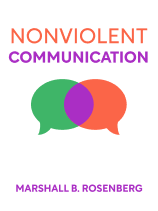

This article is an excerpt from the Shortform book guide to "Nonviolent Communication" by Marshall B. Rosenberg. Shortform has the world's best summaries and analyses of books you should be reading.
Like this article? Sign up for a free trial here .
Is there a way of expressing anger in a nonviolent, constructive way? How can you show the other person that you are angry without displaying all the usual signs of anger?
Expressing anger in a healthy way starts by taking responsibility for it. To do that, we have to accept that other people are never the true cause of our anger—they are the stimulus.
Here are some tips for expressing anger in a nonviolent and constructive way.
Expressing Anger Nonviolently
Expressing anger in a constructive, non-aggressive way starts with understanding and accepting that people or events are not the cause. Causal language (like in the phrase “He made me angry”) implies that someone’s behavior directly created your emotion—in reality, what you feel is the result of how you interpret that behavior.
To illustrate this, imagine you have a friend over for dinner and they accidentally break a glass. If the glass was expensive or had sentimental value, you might be furious; if it was cheap or brought back unpleasant memories, you might not be bothered. Either way, how you feel about the glass determines whether you get angry—not the broken glass itself.
We unconsciously cause our own anger by making judgments about other people and their behavior. In other words, when you feel angry, you’re not reacting to someone’s behavior—you’re reacting to your own unmet needs, and that person’s behavior is just the stimulus that provoked the reaction.
This doesn’t mean anger is something you choose to turn on or off depending on the situation. The process of turning an external stimulus into a feeling of anger plays out unconsciously, and that anger often disappears the moment you decide to tune into your needs and emotions instead.
For example, if you were unexpectedly fired from your job, you might rage about how your boss is an idiot and attribute your fury to his decision. In reality, your boss is just the stimulus—the cause of that anger is the fact that your needs for financial security and a positive self-image are now being unmet. In that case, anger is a secondary emotion that obscures your fear and sadness about not being able to financially provide for yourself or your family.
Making that distinction between stimulus and cause is especially difficult in a culture that discourages emotional vulnerability. It’s much easier and more culturally acceptable to be outraged after losing a job than to be honest about being afraid or dejected. The English language blurs the line between stimulus and cause even further—we use phrases like “You make me angry” and “I’m upset because he did that” to place the blame on others rather than taking responsibility for our own emotions.
Anger Highlights Unmet Needs
It can be especially hard to take responsibility for anger when it feels like “righteous indignation” or in situations where you’ve been directly harmed by someone else’s behavior. That anger can be either a harmful distraction or a helpful tool depending on how you respond to it.
Anger stems from the judgment that a certain behavior is “wrong,” and that kind of judgment hinders our ability to authentically connect with someone else. Refraining from judging someone as “wrong” doesn’t mean you endorse their behavior—it just means you’re choosing to frame it in terms of your own feelings and needs instead of name-calling.
On a practical level, anger can also be a helpful indicator of an unmet need—noticing the bodily sensations that go along with anger can act as a reminder to observe and identify our feelings and needs. However, once you’re aware of that unmet need, anger makes it even harder to get that need met because it distracts you with a focus on punishment and blame.
For example, if you hear a relative make a racist comment, your automatic response might be anger. Once you notice that feeling, you have two options: Stick with the anger or dig deeper for the underlying need. If you choose to stick with anger you might find yourself in a shouting match with your relative that ultimately goes nowhere. On the other hand, if you choose to look for the unmet need and approach it with empathy, you may discover that your anger stems from a need for all people to be treated with fairness and respect. If that’s the case, shouting at your relative or calling him a racist is unlikely to help you meet that need. Armed with that awareness, you can now consciously choose to approach the conversation with empathy and have a better chance at meeting your needs.
The example above is an ideal scenario. In reality, resisting the urge to lash out when someone says something ignorant or derogatory is easier said than done. Anger is a powerful emotion, so this requires extensive practice before it becomes a habit. But if the goal is to create a world in which people are treated fairly, anger isn’t the best strategy. People immediately shut down when they feel judged or blamed, so they’re far less open to hearing our needs and feelings.
Expressing Anger Constructively
The first step to expressing anger constructively is to make sure the other person is in a position where they’re able to truly listen to that expression. In other words, you need to offer empathy first before you can expect to be heard empathically. This is one of the most difficult parts of expressing anger nonviolently because it runs so counter to our fight-or-flight impulse. If your uncle starts making racist comments at the dinner table, offering empathy may be the last thing you feel like doing—but launching into expressing your anger without that step sets the conversation up to fail.
If you feel too worked up to offer empathy at first, it may be best to take a break and offer yourself some emergency first-aid empathy before engaging. In practice, this means allowing yourself a moment to feel the full extent of your anger without judging yourself for being angry or thinking judgmental thoughts.
Although it’s difficult, offering empathy to someone who makes you angry helps defuse the situation by reconnecting you to a sense of common humanity. If you’re able to observe without judging, identify the person’s feelings, and connect to their needs, you’ll likely discover that you have something in common with them because all humans have the same fundamental needs. Connecting in this way instead of focusing just on the person’s opinions makes it much easier to engage respectfully.
After offering empathy, there are four steps to expressing anger constructively:
- Stop and breathe.
- Identify any judgmental thoughts.
- Connect to your needs.
- Express your feelings and needs.
For example, here’s how this process might play out after being fired unexpectedly.
- Stop and breathe. Try not to respond until you’re able to do so calmly.
- Identify any judgmental thoughts—but without judging yourself for having them. Internally fuming about your boss’s every fault is a normal response to being fired. Instead of trying to stem the flow of thoughts, simply observe it and let it pass without criticizing yourself.
- Connect to your needs. When you feel calmer, try to identify the needs underlying your anger (for example, the need for financial security).
- Express your feelings and needs. For example, you might say, “I feel terrified because I need to support my family financially.” By working through each step, you’ve allowed yourself to fully feel your emotions (both the anger and the underlying fear) and to express them without placing the blame on your boss.
Even if you’re careful to express your feelings in a way that shows you’re taking responsibility for them, other people may hear that expression as blame. Since blame puts people into either self-defense or self-deprecation and shuts down their ability to listen empathically, slow down and clarify if you sense someone feeling blamed.

———End of Preview———
Like what you just read? Read the rest of the world's best book summary and analysis of Marshall B. Rosenberg's "Nonviolent Communication" at Shortform .
Here's what you'll find in our full Nonviolent Communication summary :
- How nonviolent communication lets you have more compassion for yourself
- Why nonviolent communication is the key to fostering authentic connections with others
- The 4 steps to expressing yourself with empathy towards others






